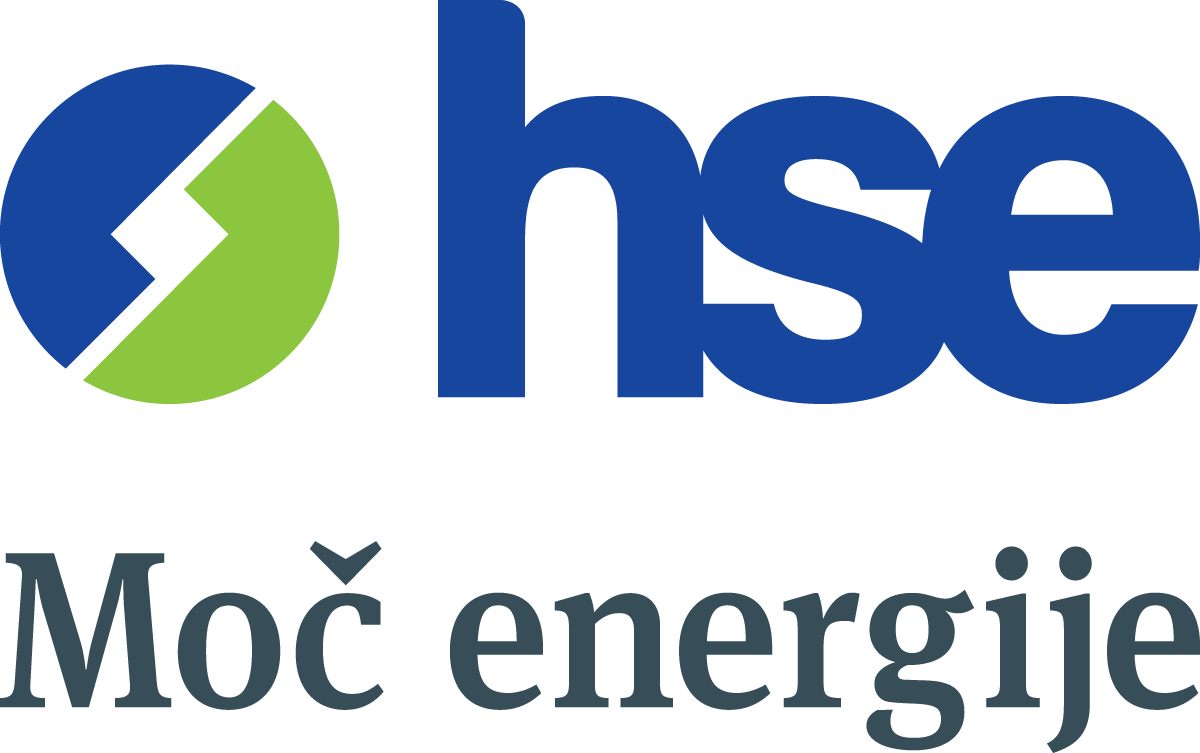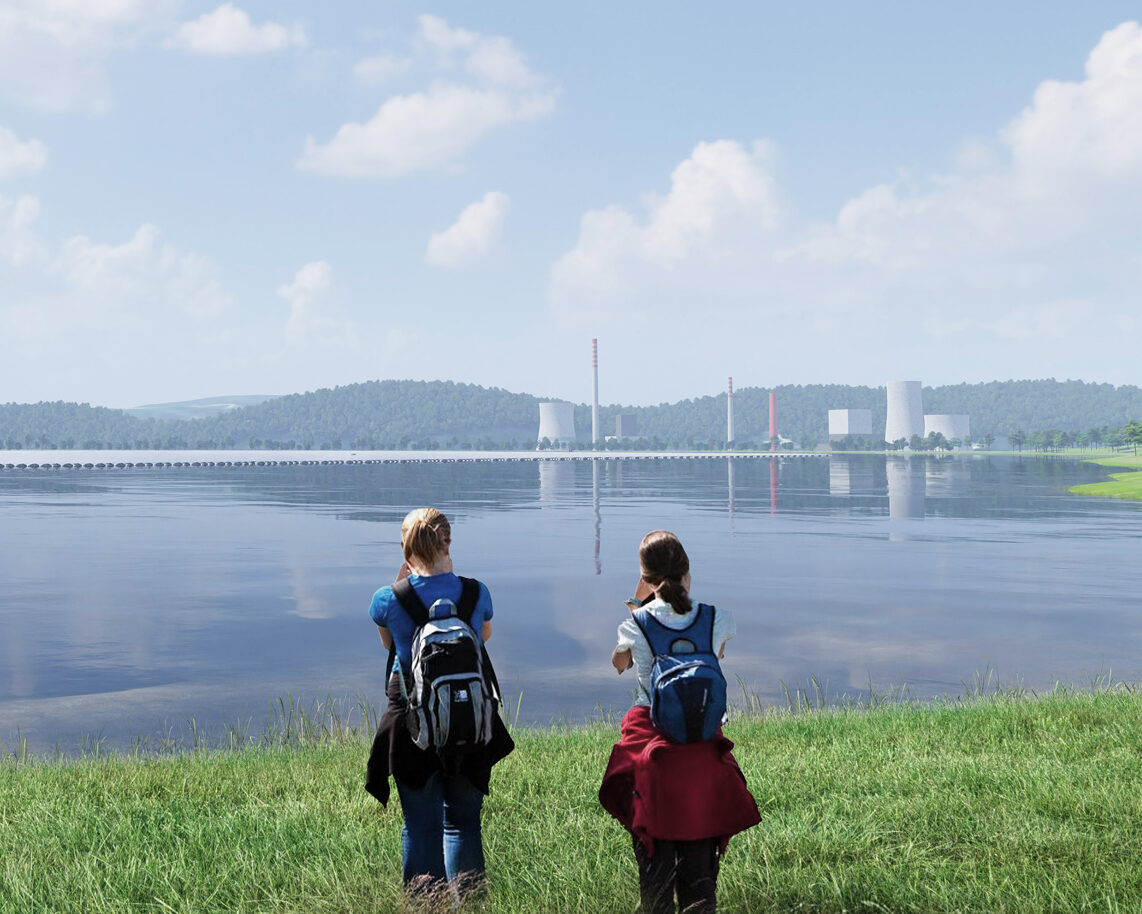The Šalek Valley is a strategic energy production location of the HSE Group and, especially recently, the centre of discussions about the green transition. Considering the historical role of the Šoštanj Thermal Power Plant and the coal industry in the region, and the ever-increasing demands to reduce greenhouse gas emissions, it is clear that the future of this valley is focused on sustainable energy solutions that will reduce the negative environmental impact, while providing new jobs and improving the quality of life of the local community.
The challenges of the transition to a low-carbon future are great, and Holding Slovenske Elektrarne (HSE) and the Šoštanj Thermal Power Plant (TEŠ), which have committed themselves to finding sustainable solutions for the production of green energy, play a key role in this transformation. By doing so, we also follow the main strategic goals of the state and the European Union in the field of green transition. By supporting green technologies and a circular economy and by investing in renewable energy sources, the Šalek Valley can become an example of good practice of the green energy transition, effective restructuring and successful adaptation to new energy conditions.
The Šalek Valley is facing an exceptionally important restructuring period. It will be marked by the green transition, which enables long-term environmental, economic and social sustainability. For this reason, it will gradually transition to new forms of energy production, in which renewable sources will play a key role.
Part of the key green transition investments will take place in the area of the current Šoštanj Thermal Power Plant. These include projects such as the floating solar power plant on Lake Družmirje, restructuring of the district heating system, introduction of hydrogen technologies and certain innovative projects in the Šalek Valley, which will be overseen by the company HSE Sa-Ša.
The Družmirje floating solar power plant – an important green transition project
Potential projects being mutually complementary will be important in realising the vision of the green transition. One of the more important ones is, as already mentioned, the Družmirje floating solar power plant, procedures for which , including the drafting of a national spatial plan, are already under way. Družmirje would be the first major floating solar power plant in Slovenia and could produce up to 140 MWp of power at an annual production of 115 GWh. Simultaneously with the installation of the floating solar power plant, the surrounding area of the lake would be developed for the purposes of tourism, sport and recreation. A large section of Lake Družmirje and its entire shoreline would be designated for water and waterfront activities in the long term, with walking trails created along the banks.
Because we want the local public to be regularly and comprehensively informed about the floating solar power plant project, an information point has been established in the municipality for this purpose. Residents of Šoštanj can visit it every third Tuesday of the month, between 3 p.m. and 5 p.m., at the seat of the Municipality of Šoštanj.
Advanced energy: hydrogen as energy source of the future
Hydrogen is a promising technology in the context of reducing greenhouse gas emissions and transitioning to renewable energy sources and in the restructuring of the Šoštanj Thermal Power Plant after the coal phase-out. It is a very versatile and clean energy source, especially in the case of green hydrogen, which is produced from renewable energy sources (e.g. from the Družmirje floating solar power plant) by means of electrolysis. Its use as an energy source can enable the decarbonisation of sectors and serve as a means of energy storage when renewable sources are not available (e.g. at night or when there is no wind).
HSE, as a leading partner in the Northern Adriatic Hydrogen Valley project, is developing together with the TEŠ an investment in the production of renewable hydrogen at the TEŠ location. The investment includes a proton exchange membrane (PEM) electrolyser, a compressor station, a hydrogen charging station for cars and buses, and a hydrogen charging station for four transport trailers. As part of the project, we plan to install a system of up to 20 MW, which would increase the production capacity from 300 to 3,000 tonnes per year. Depending on the development of the ecosystem, we plan to expand the transportation and distribution capacity in accordance with the demand and/or the integration of infrastructure for injecting renewable hydrogen into the existing gas pipeline.
Energy security and support from European institutions
The green transition also requires large investments, which is why it will be increasingly important to find financial incentives. HSE is already obtaining financial resources from various European funds, and we are also actively looking for options and opportunities for co-financing projects within national incentives, the modernisation fund and other mechanisms that promote renewable energy sources and contribute to implementing the European Green Deal. Support programmes, for example, as part of the European project for just transition, have already been established in the Šalek Valley for local entrepreneurs who want to focus their activities on sustainable projects. This support forms the basis for establishing a new business ecosystem, which will be based on the principles of energy efficiency and responsible use of resources, while the Just Transition Fund will also support investments in renewable resources in the region.
Cooperation is key
As the green transition also affects the economy and jobs to a certain extent, we always work with local communities and the state when preparing specific plans. The energy transition does not only mean technological changes, as it also – and above all – affects employees and the local community. Implementing the principles of social justice means the inclusion of workers in the restructuring process, creation of new jobs and investments in the future of the region, and above all, long-term planning and adaptation at the local and national level. We also focus on developing local projects that will create new opportunities in renewable energy sources and innovation. We must look for the synergistic effects of all projects and continue to develop the energy production location in Šoštanj, as it has an extraordinary potential, not only because of the equipment and infrastructure, but also because of the know-how and professionalism of the staff.








